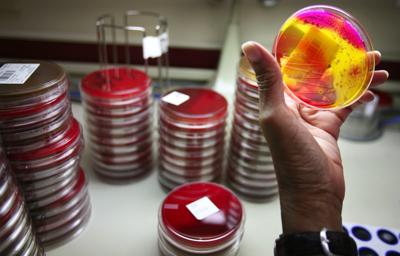A new national report shows antibiotic use is declining across the United States — a positive development as health care providers increasingly struggle to find drugs to treat antibiotic-resistant superbugs.
"It’s great news to me because we’ve known for the longest time that the highest quality care did not involve antibiotics," said Dr. Stan Wilson, a surgeon and the vice president for medical affairs at Roper St. Francis.
The authors of the Health of America report, which was published by the Blue Cross Blue Shield Association, said antibiotic overuse in the U.S. has been a "topic of concern" for many years.
Overuse has forced "clever bacteria" to adapt and develop resistance, Wilson said.
"Bacteria are developing more rapidly than our scientists are able to make drugs," he said.
Some of those antibiotic-resistant bacteria are deadly. They include methicillin-resistant Staphylococcus aureus and carbapenem-resistant Enterobacteriacea — the so-called “nightmare bacteria" — which have become so difficult to treat that doctors are running out of options to rid their patients of these infections. These "superbugs" infect thousands of Americans each year and kill hundreds of people.
To combat the problem, experts have long acknowledged that doctors need to prescribe fewer antibiotics and that patients must understand most "colds" don't respond to these drugs at all. The Health of America report suggests these messages may be sticking.
Using prescription fill rates, the new report shows antibiotic use declined 9 percent in the U.S. between 2010 and 2016. Those rates dropped even more dramatically in several South Carolina cities.
Between 2010 and 2016, antibiotic use decreased by 20 percent in Columbia, 16 percent in Charleston and 12 percent in Greenville.
The report's authors concluded public awareness campaigns appear to be "achieving measurable results" but added "the data also show large regional variation in the prescribing of antibiotics and continued high use for conditions where antibiotics have limited effectiveness, indicating there are further improvements to be made."
Dr. Shawn Stinson, the chief medical officer for BlueCross BlueShield of South Carolina, applauded pediatricians for leading the way.
Nationally, the new report shows antibiotic prescriptions filled for children dropped 16 percent between 2010 to 2016, compared to a 6 percent drop among adults.
"I think it’s really good news," Stinson said. "Major kudos to our pediatricians across the state."







